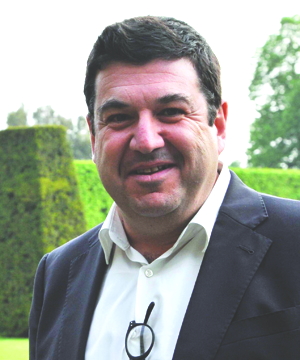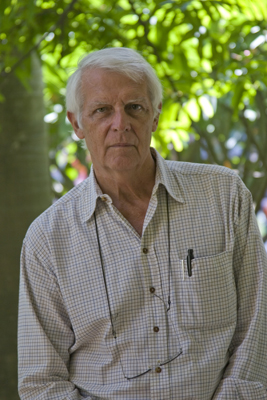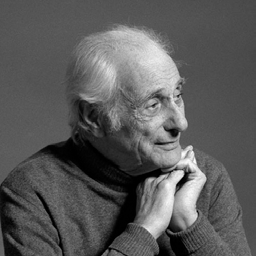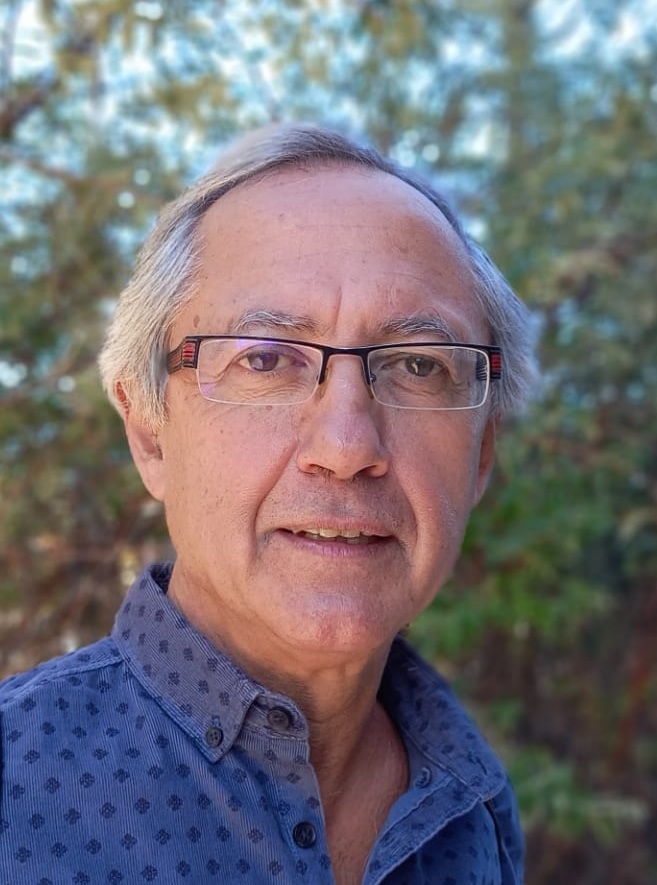A conversation with Arch. Bak Gordon

A conversation with Arch. Bak Gordon
'Architecture needs time. We are transforming a place and it seems that people don't understand that it takes time to think, otherwise the places will be out of character. Architecture requires serenity, it cannot be euphoric.’
I would like to understand the path that led you here. I know you have a passion for drawing, you had an exhibit of some of your drawings recently. Was that passion that made you choose architecture?
The decision to choose architecture came when I let myself be influenced by two or three works when I was in high school: the Gulbenkian Foundation and a modernist house from the 70’s era. I remember that I, unexpectedly, someone who even had interests in other areas, such as mechanics and electricity, started to design houses. I went to study for António Arroio, in 1983/84, a secondary school dedicated to arts, and I really got involved in subjects like art, cinema, architecture … And then I got ready for university. I didn’t enter Lisbon school for three tenths. I ended up in Porto, which was a joy since the School of Fine Arts in Porto was an extraordinary universe, in an incredible city, where there was great intimacy between colleagues and teachers. In the Drawing class, my teacher was the sculptor José Grade, a mythical figure in the course and the school, who involved us in the art of drawing, as if it were a language, which it is, in fact. The process was crazy, we drew non-stop, day and night. That’s when drawing became very important in my way of working, of investigating the project process. I returned to Lisbon, at the end of the first year, and started making larger, more expressionist drawings, as part of my work. These were the works that are now on display at Galeria João Esteves de Oliveira. In the meantime, I’ve attended the Polytechnic of Milan. At that time there was very little information in Portugal about architecture, there were no conferences, almost nobody came here, there were few publications. And so it was worth it above all for what I absorbed around school, for the people I met and for the fact that I traveled a lot.
I read somewhere that you don’t consider architects to be artists. How do you define your way of making architecture?
We, architects, have a peculiar knowledge, since we are responding to equations, which usually have a place and a program, which are always very different, and that is why our preparation, technique, and the way of looking at the world, calls for the knowledge and the indispensable people to give the answer. Of course, we have a particular sensitivity, and maybe that is when we are confused with artists. We can use three words here: art, science and technique; that is, a poetic view of the world, without which it is impossible to make any proposal for a place’s transformation; technical knowledge, so that things can be materialized; and the scientific view, the knowledge that must be summoned to respond to requests. That’s what we do: we lead teams and try to contribute to a continuous transformation, much more than the obstinate attempt to be different or to need to “invent the world every Monday morning”. What is needed is to contribute to a territory that is always changing, in an induction process.
Was there any reaction to your work that surprised you a lot?
I mostly remember the comments in the communities where they belong. For example, at Lagar Oliveira da Serra, in Alentejo, people said that it doesn’t even look like a factory but a cultural center. But I also remember when I made Garcia de Orta Secondary School with BETAR – which has an extraordinary prestressed structure, designed by Eng. Miguel Villar – it was said that people were afraid to go under the covered square, because it was scary to be under an immense mass without visible supports, until they realized that it would never fall on them …
You are a teacher at Instituto Superior Técnico. What does that experience offer you?
It forces me to be active in the way of looking at the transformation possibilities. I like to help leading internal research processes, rather than imposing a way of doing things. I prefer that people find the motivation for transformation, and then support them with my experience. It is very stimulating because there are very different approaches. But I also have classes abroad. This year I taught in Barcelona during the semester and next year I’m going to Harvard. It is interesting to meet students from different places and to be able to understand what they have in common and what is different, which forces me to react to what I find. The funny thing is that we tend to say that there is no Lisbon architecture or a Porto one, but it is not quite true, because schools still have a lot of influence.
Do you feel that architects today have to do more with less?
No doubt. Today the search is very restricted and there are many architects. Afterwards, architecture was unable to gain prestige and maintain a certain dignity in its practice and fees. And there are still the deadlines. Perhaps due to the lack of respect for the activity, you end up having to make decisions very quickly; I have just finished delivering a project for a square that, maybe, when it is built, will stay there for 100 years, and for which I had to have an idea in a week. Architecture needs time; it takes time to experiment, to go back, to redo. We are transforming a place and it seems that people don’t understand that it takes time to think, otherwise the places will be out of character. Architecture requires serenity, it cannot be euphoric.
Regarding the National Housing Strategy. Do you agree that the way in which it proposes to recover the derelict buildings in Lisbon is an asset?
I think there must be legislation that prevents homeowners from not taking care of their assets. The ownership of a building does not end there, the building is part of an urban fabric that belongs to everyone, it is in a city, in a public place, and so there must be regulation. I do not know if the city hall should reclaim the buildings or adopt any other system, but we risk having one of the most derelict historic centers in Europe. I think that things are gradually changing. But you should look strictly at the buildings, but at the accessibility, public transport, services. There is no point in housing the city center and then taking the hospitals to the periphery, the universities to the campuses, emptying the cities of activities that have always given them meaning. It is necessary to preserve the built heritage, accompained by the other virtues and values. And that seems to me that we are getting in that way. I realized now that there is a desire to concentrate all transport in Lisbon under one authority, it cannot be each one for themselvs. But I am pleased to know that there are those who care about our heritage.
This interview is part of the Artes & Letras Magazine # 65, June 2015
Partially automatic translation from portuguese: some expressions may differ from their actual meaning.
News & Interviews
A conversation with Arch. José Forjaz
'I am an internationalist. Only like that we can be consistent with a society that we want closely integrated. I feel like an architect. I think our homeland is where we work. ’ Read more
A conversation with Arch. Bartolomeu Costa Cabral
'I've always had a rational attitude in projects, I thought I would not be a great architect in the visual aspect, because my security is the analysis of the site and the program, the image comes later.' Read more
A conversation with Arch. Luís Cabral
‘Architecture that designs buildings can enclosure an environment without external factors, with lighting and air conditioning. Outside, you need to deeply understand the signs of the landscape. ' Read more




